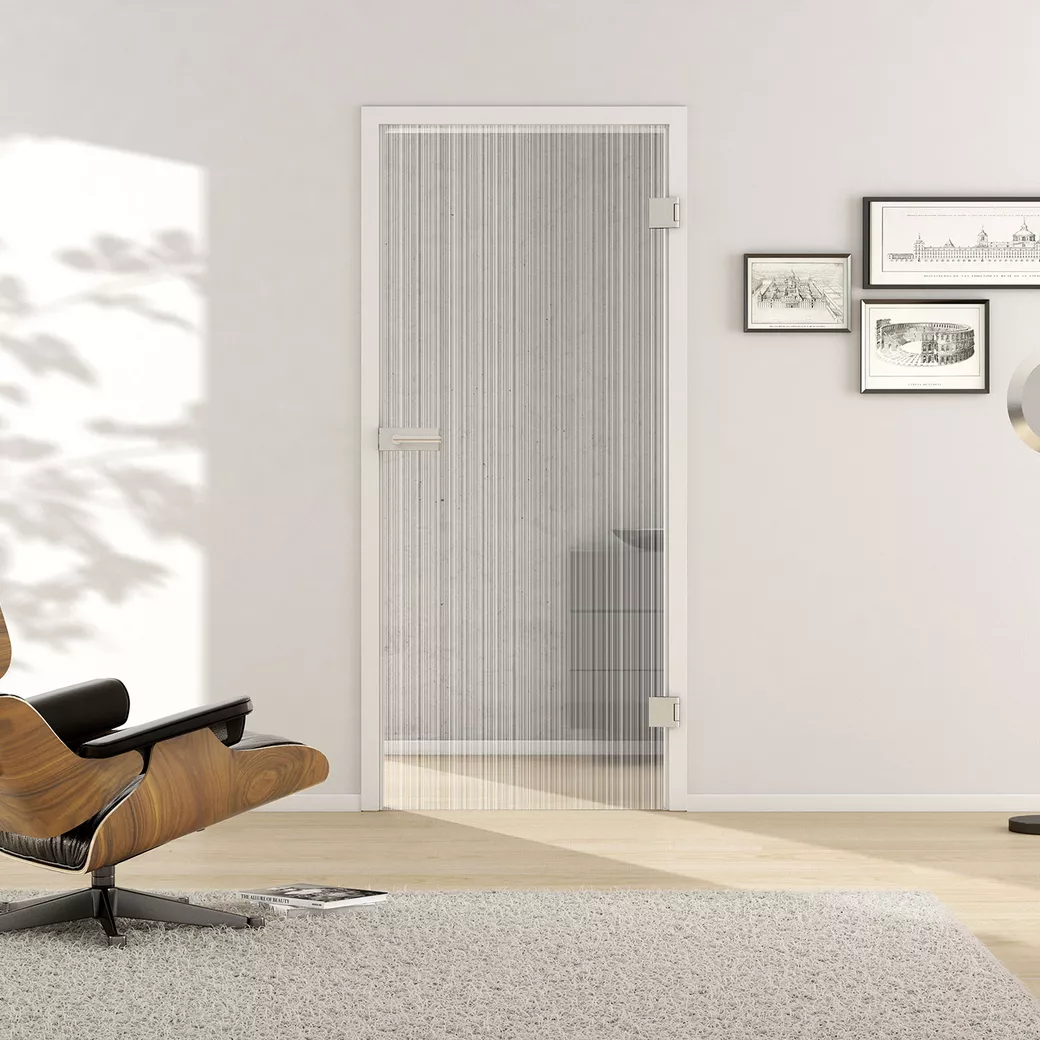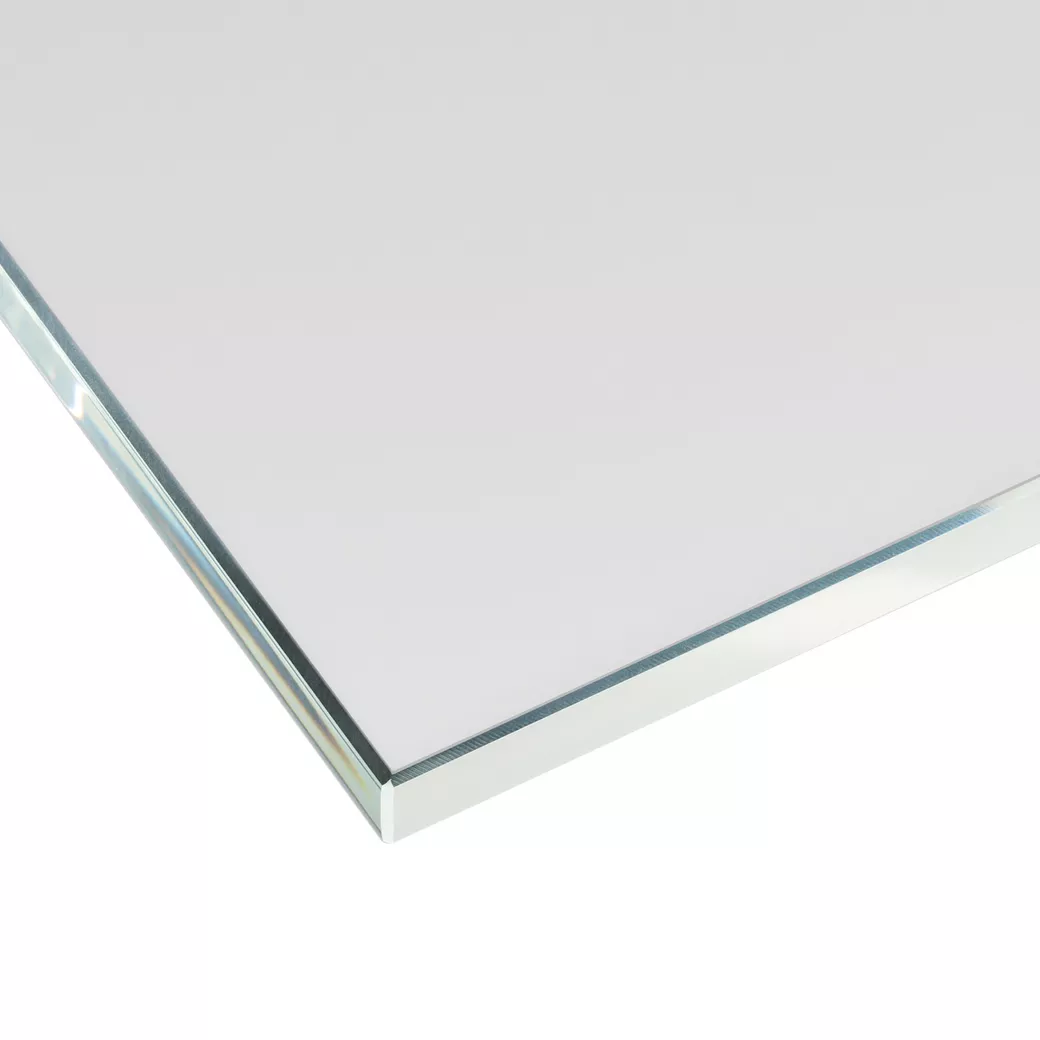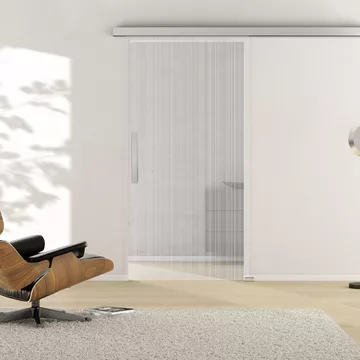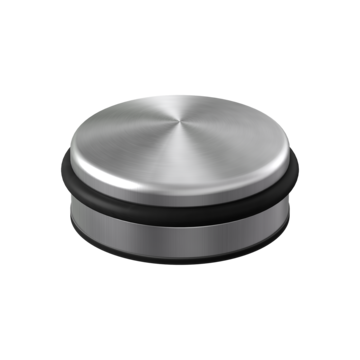Hinged glass door (tempered safety glass)SUMMER RAIN_515
Art. No. 515011624
419.82 €
MSRP (based on german VAT)*
SUMMER RAIN 515
Line Line Line
Laser technology allows the finest engravings. They draw through the glass surface very finely. The characteristic lines may vary: strictly arranged, condensing, superimposed or even irregularly broken. These decors blend harmoniously into the living space design.
Supplied with
1x glass revolving door
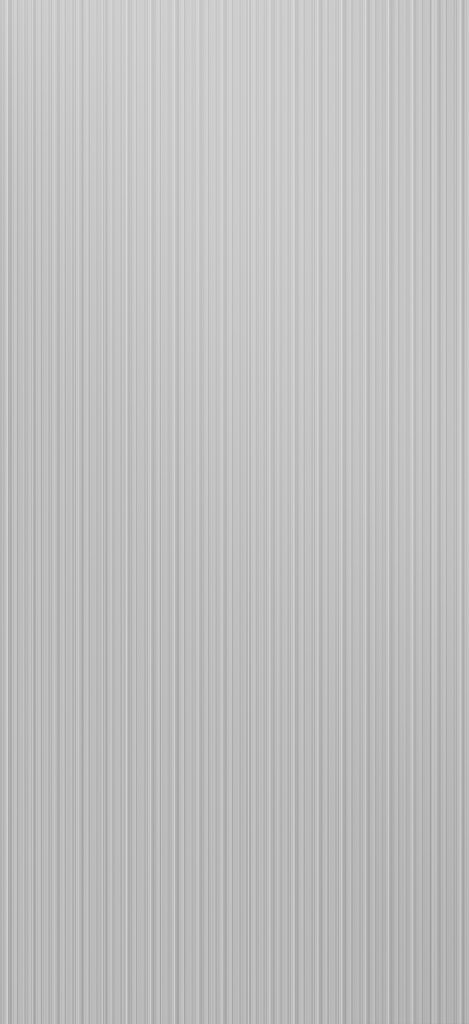
Alternative products
Accessories
Glass doors
Glass revolving doors are becoming more and more trendy and are the stars among doors: they open up rooms and perspectives. Glass doors provide living rooms with light, allow wide lines of sight and make living areas appear friendlier, brighter and altogether larger. A revolving door made of glass is the optimal alternative to a revolving door made of wood.
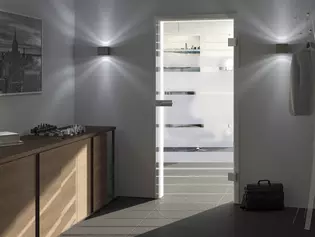
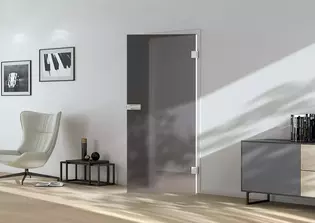
What is the DIN direction for Doors?
The DIN direction indicates the direction in which a Door opens. Do you want to find out which DIN direction is right for you? Then imagine you are standing in front of the Door. It opens towards you. The side on which the Door hinges (1) of the Hinged door are located - also known as the hinge side (2) - determines the DIN direction. The opposite hinge side (3) is the opposite side of the Door.
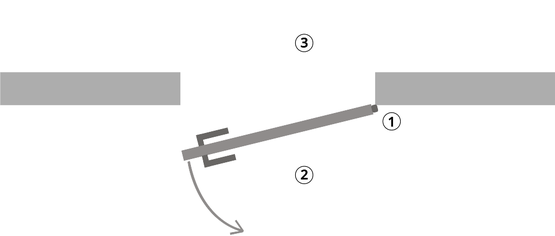

If the hinges are on the right, it is a DIN right-hand door.
What is the DIN direction for glass doors?
The DIN direction indicates in which direction a door opens. Do you want to find out which DIN direction is the right one for you? Then imagine you are standing in front of the door. It opens towards you. The side on which the hinges of the Hinged door are located - also called the hinge side - determines the DIN direction.

If the hinges are on the right, it is a DIN right-hand door.

If the hinges are on the left, your door is a DIN left door.
What is the tape side and the tape opposite side?
Door hinges connect a door to the door frame and at the same time allow it to rotate. The hinge side (2) is the side on which the door hinges (1) are located. The opposite hinge side (3) refers to the side opposite the door hinges.

Pure White
White glass has a particularly noble effect and is characterised by a bright lighting effect in modern rooms. The green or grey tinge present in the product range is reduced to a minimum here. With PURE WHITE from Griffwerk, colour-neutral and flexible room design is guaranteed. White tones and daylight are expressed in a particularly natural way.
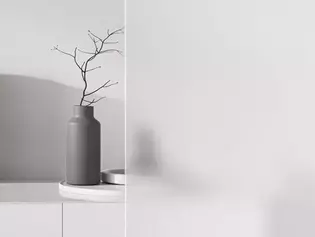
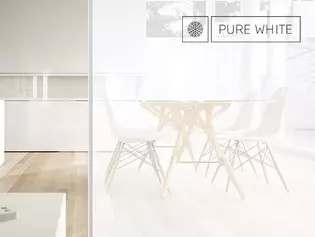
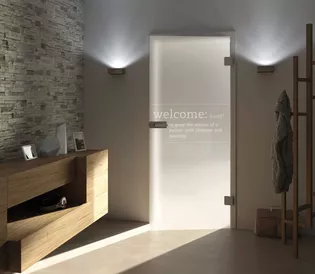
Matt or rather clear glass?
Matt glass surfaces provide better privacy and are also very popular for their aesthetics. The tactile quality of the surface of our matt glass doors nevertheless feels smooth due to the screen printing process and is extra scratch-resistant.
Reflections are softly softened, giving frosted finishes a calmer atmosphere. In contrast to clear glass, the view through frosted glass is only diffused due to the soft drawing. Objects or people behind a frosted glass door are only visible in shadowy form. In addition, the scattered incidence of light gives rooms and objects soft shadows and leads to a natural living feeling.
How do I clean a revolving glass door?
To clean the surfaces of interior revolving glass doors, warm water is sufficient. Please use a sponge or a soft, lint-free cloth for this purpose. Clean over a large area and not selectively.
If any remaining dirt such as fingerprints is still visible on the revolving door, you can also use commercially available glass cleaners (foam cleaners). Please do not use any abrasive, corrosive, acidic or alkaline cleaning agents. They attack the glass surface and can thus be the cause of scratches. You can wipe excess water dry with a microfibre cloth. If glass is in contact with water for a longer period of time, stubborn limescale residues can form.
With laminated glass doors, make sure that the edge seal does not come into contact with water, otherwise moisture and the cleaning agent can penetrate the laminate.
Attention
Please do not use any scratching tools, razor blades or scrapers. They can leave visible and irreparable scratch marks on the surface.
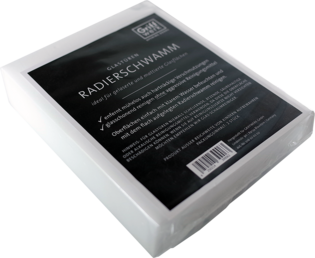
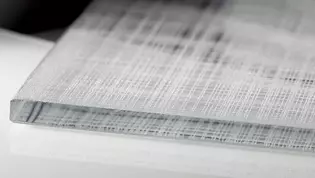
Particular attention should be paid to this with satinised and lasered surfaces
To avoid abrasion of the surface structure, do not apply too much pressure. To avoid the so-called cloud formation, rub your glass door dry over a large area with a microfibre cloth. Do not use paper or cellulose cloths. They cause too much abrasion.
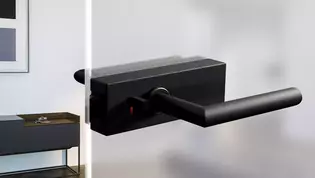
Particular attention should be paid to this with screen-printed glasses
Screen-printed surfaces are softer than the pure glass surface and therefore more sensitive to mechanical cleaning agents. In addition, they must not be cleaned with acids, as these can attack the printed image.
